Abstract
Mouse lymphocytes sensitized either in vitro or in vivo with allogeneic cells were analysed for their cytolytic activity incomplete or Ca2+-deprived medium. The deprived medium was obtained by adding EGTA in excess of the molar Ca2+ concentration but not exceeding that of Ca2+ plus Mg2+. The cytolysis in complete medium was between five and thirty-fold greater in terms of lytic units, than that in Ca2+-deprived medium. This applied equally for effectors sensitized in vivo or in vitro although the overall lytic capacity of the former was greater. The cytolysis in Ca2+-deprived medium was judged to be Mg2+ dependent, as little or no cytolysis was seen if EDTA was added to cultures in a molar concentration exceeding that of Ca2+ plus Mg2+. Direct comparison of cytolysis in complete and deprived medium showed no difference between effectors in the two situations with respect to (a) adherence to nylon wool; (b) sensitivity to lysis by anti-Thy-1.2 antiserum and complement; (c) specificity of lysis; (d) rate of cytolysis with time when effector cell numbers were adjusted to give equal levels of cytolysis at any one time; and (e) shape and angle of the slope of 51Cr release against log increase in effector cell numbers where target cell numbers were constant.
Full text
PDF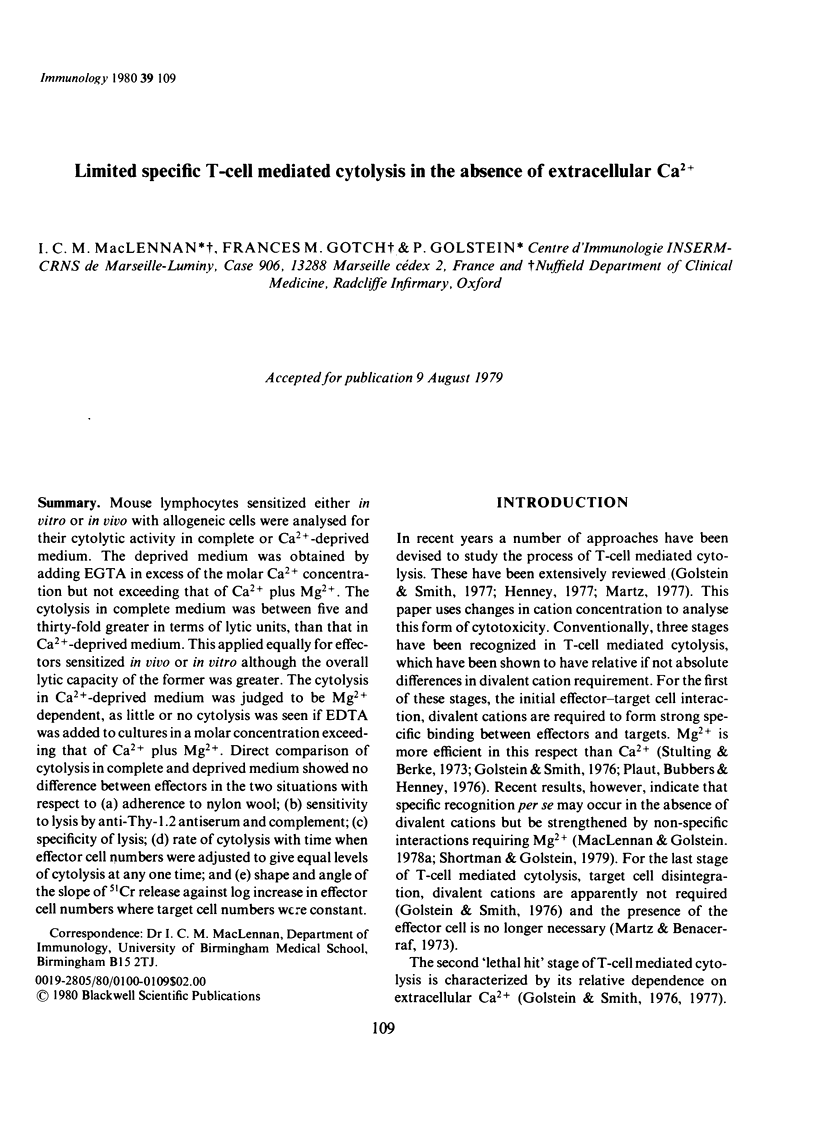
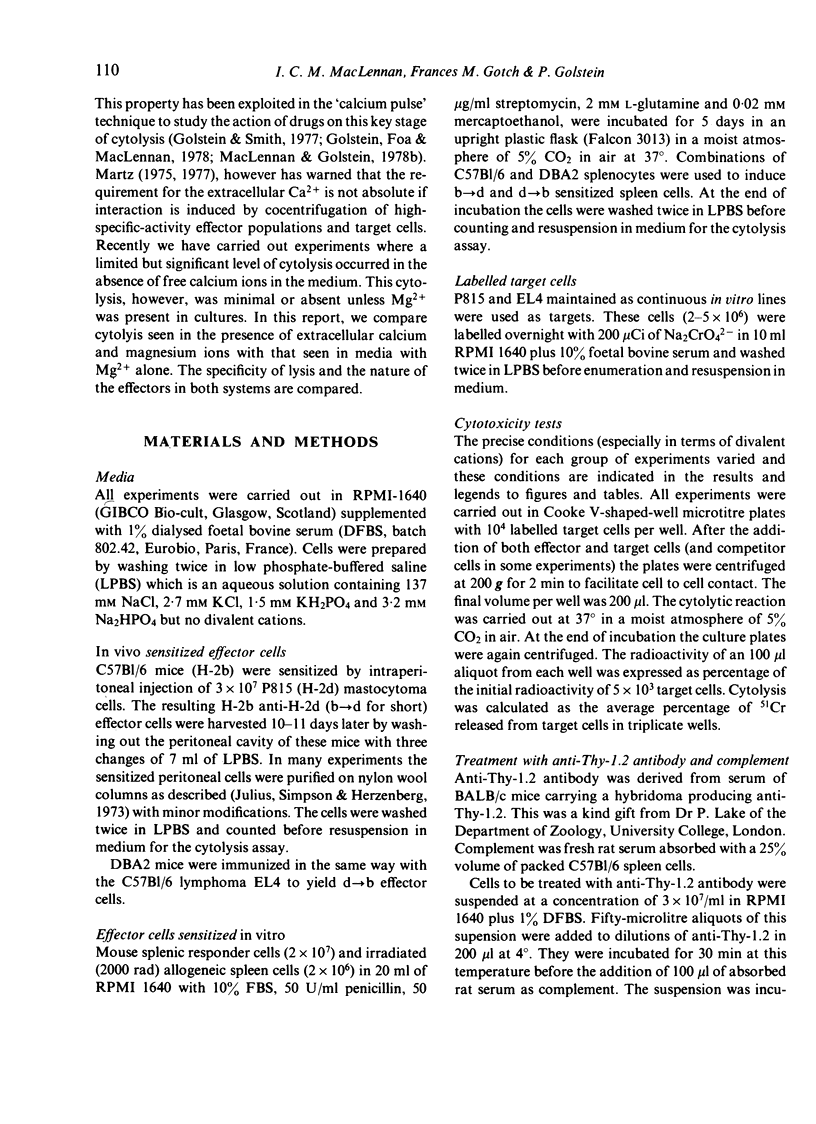
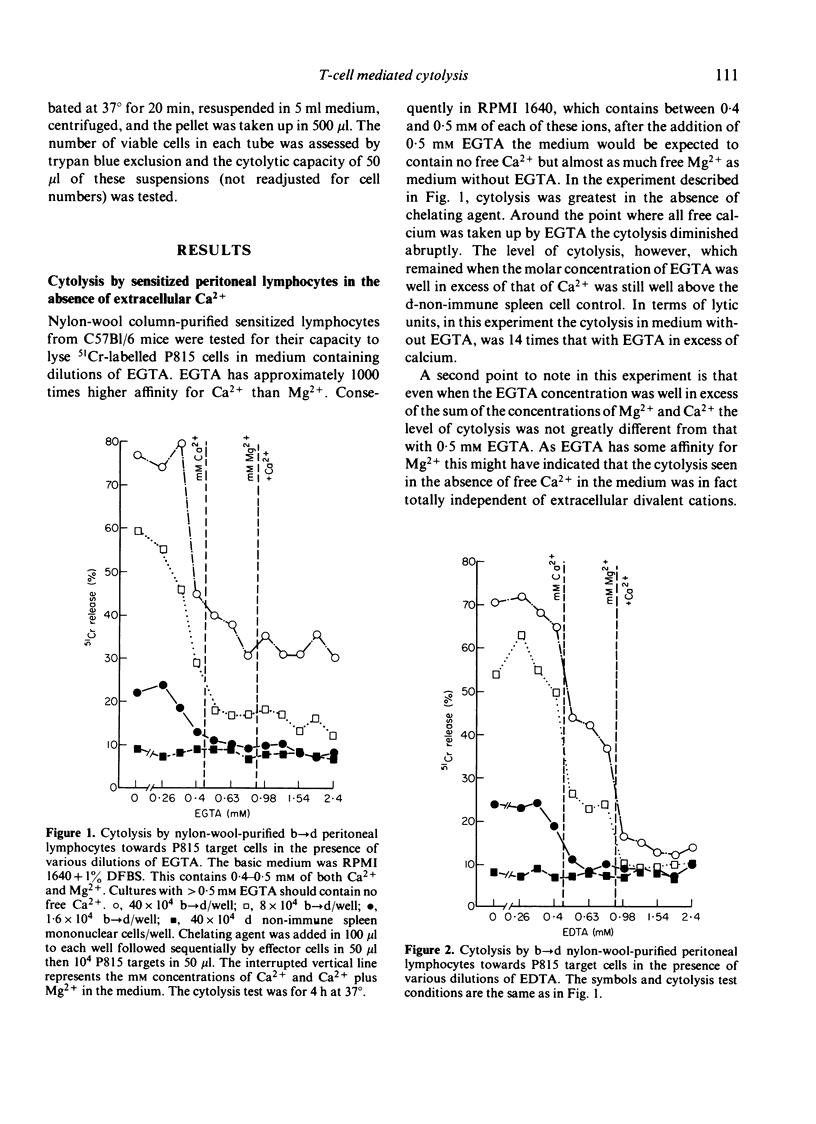
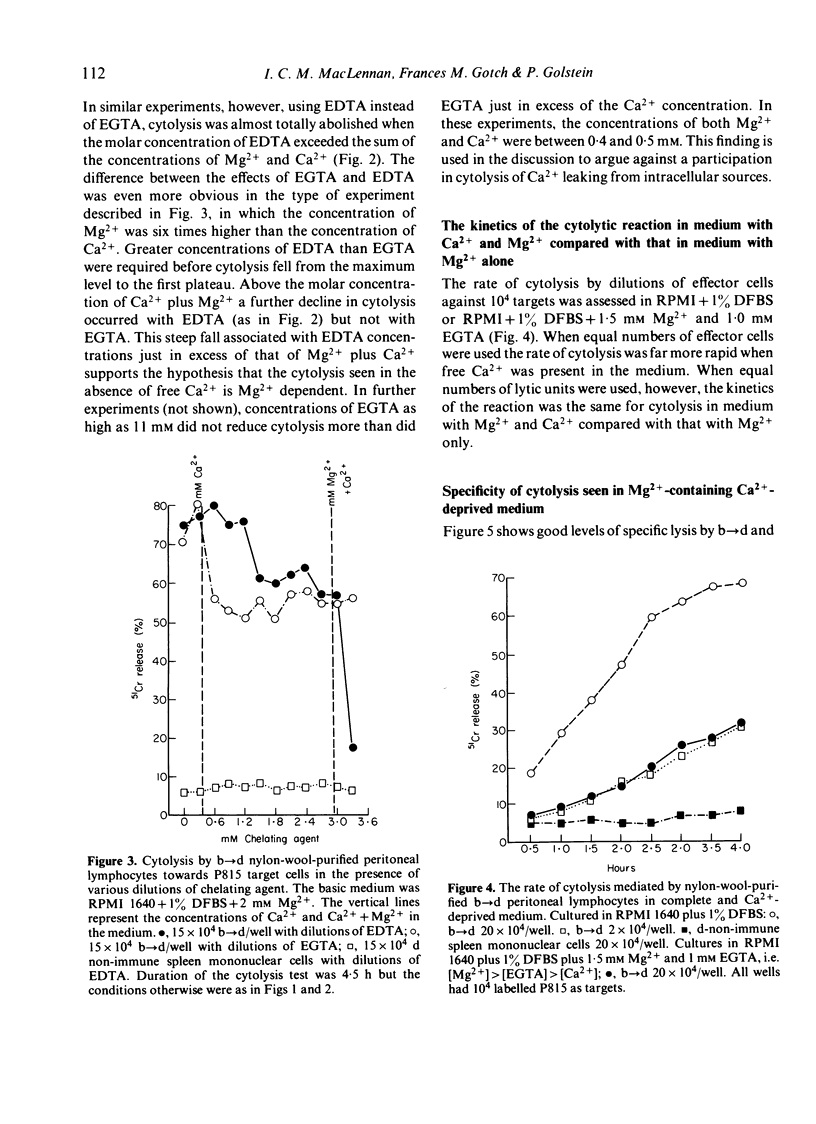
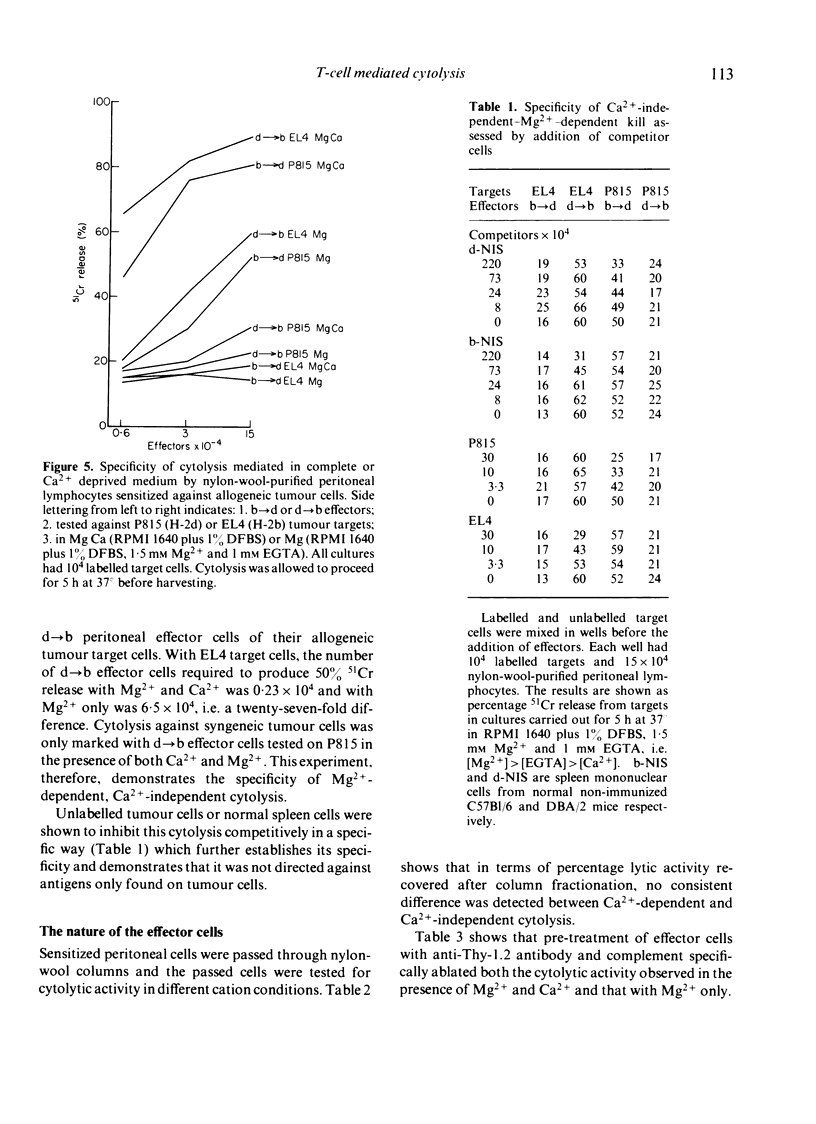
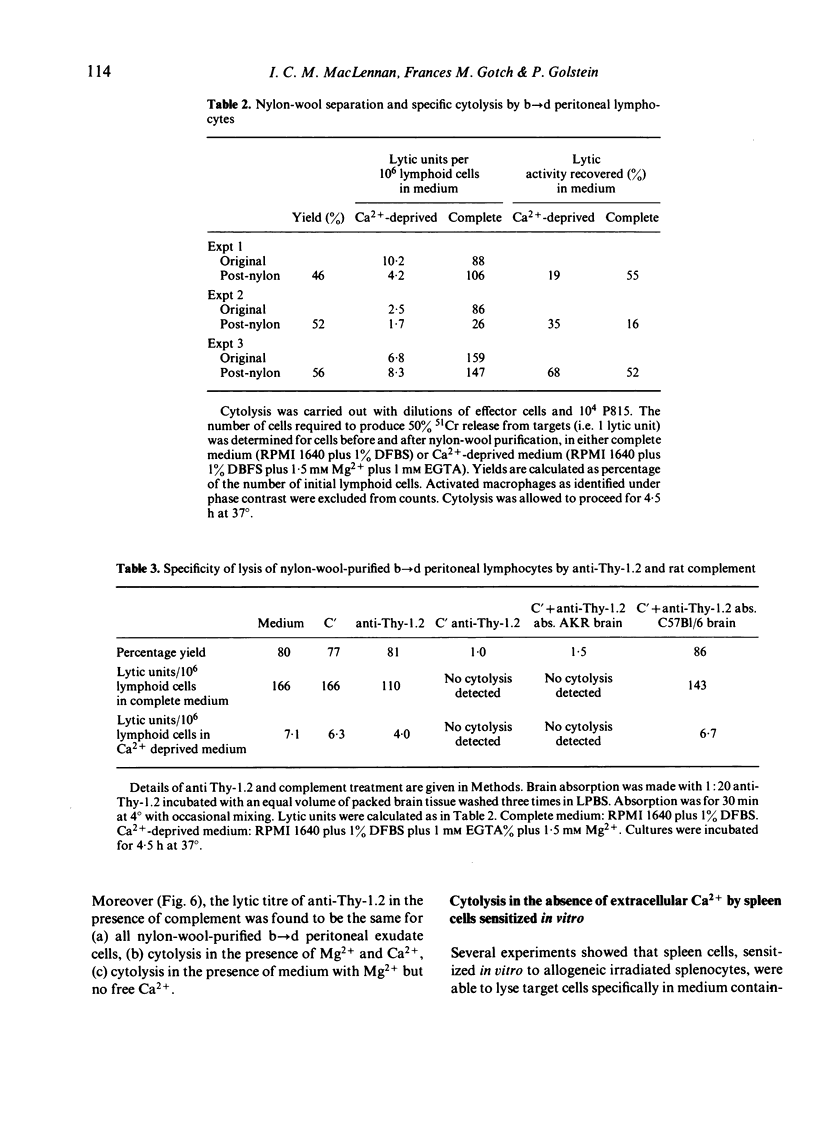
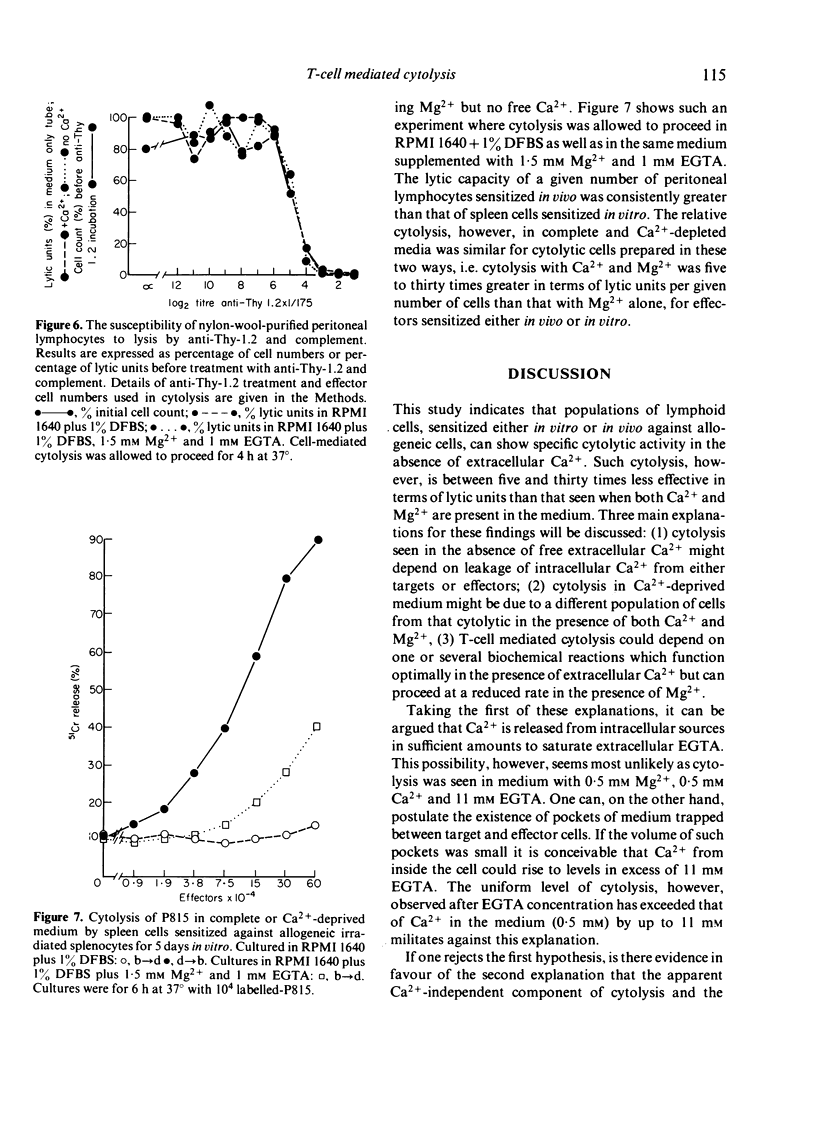
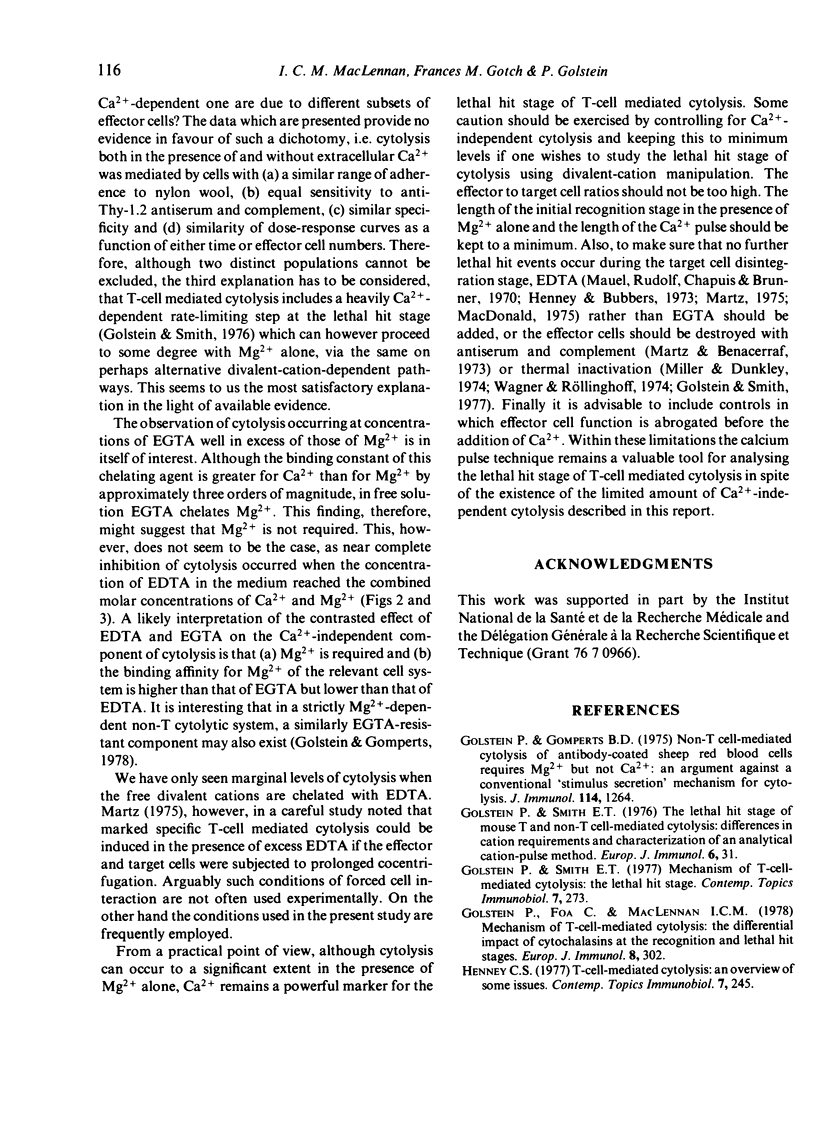
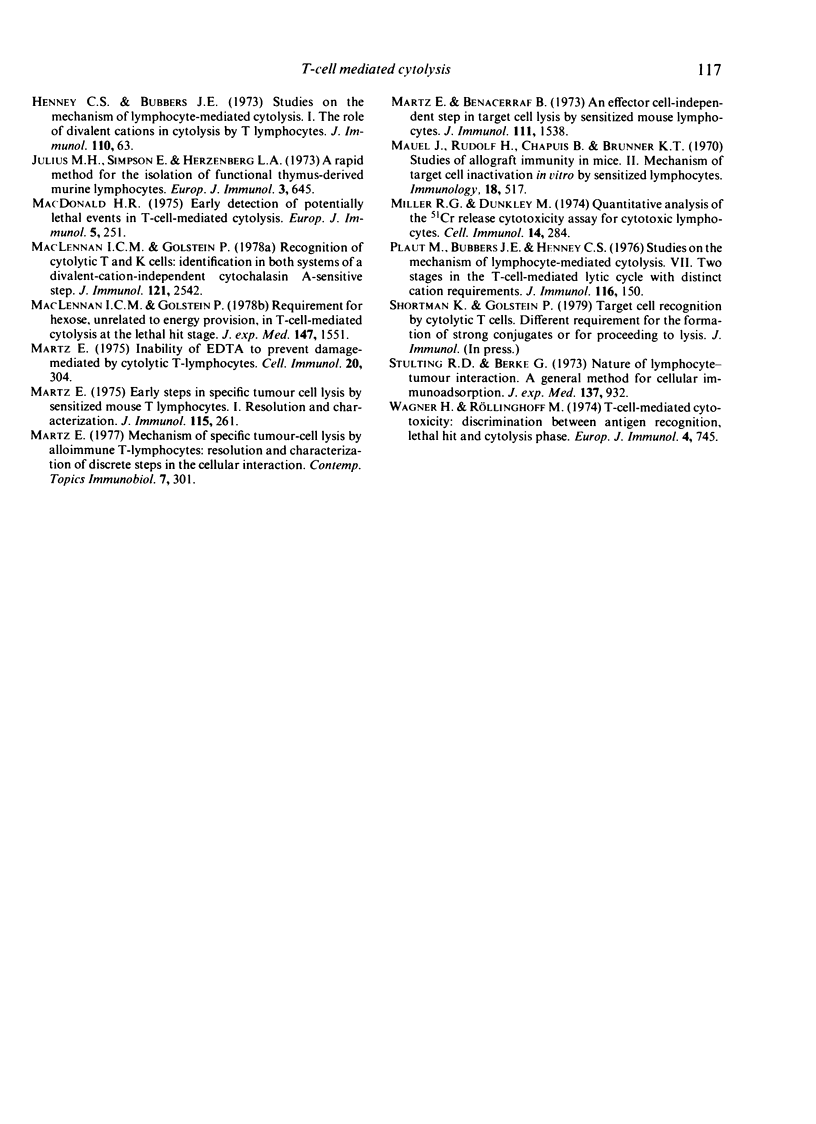
Selected References
These references are in PubMed. This may not be the complete list of references from this article.
- Golstein P., Foa C., MacLennan I. C. Mechanism of T cell-mediated cytolysis: the differential impact of cytochalasins at the recognition and lethal hit stages. Eur J Immunol. 1978 May;8(5):302–309. doi: 10.1002/eji.1830080504. [DOI] [PubMed] [Google Scholar]
- Golstein P., Gomperts B. D. Non-T cell-mediated cytolysis of antibody-coated sheep red blood cells requires Mg++ but not Ca++: An argument against a conventional "stimulus-secretion" mechanism for cytolysis. J Immunol. 1975 Apr;114(4):1264–1268. [PubMed] [Google Scholar]
- Golstein P., Smith E. T. Mechanism of T-cell-mediated cytolysis: the lethal hit stage. Contemp Top Immunobiol. 1977;7:273–300. doi: 10.1007/978-1-4684-3054-7_8. [DOI] [PubMed] [Google Scholar]
- Golstein P., Smith E. T. The lethal hit stage of mouse T and non-T cell-mediated cytolysis: differences in cation requirements and characterization of an analytical "cation pulse" method. Eur J Immunol. 1976 Jan;6(1):31–37. doi: 10.1002/eji.1830060108. [DOI] [PubMed] [Google Scholar]
- Henney C. S., Bubbers J. E. Studies on the mechanism of lymphocyte-mediated cytolysis. I. The role of divalent cations in cytolysis by T lymphocytes. J Immunol. 1973 Jan;110(1):63–72. [PubMed] [Google Scholar]
- Henney C. S. T-Cell-mediated cytolysis: an overview of some current issues. Contemp Top Immunobiol. 1977;7:245–272. doi: 10.1007/978-1-4684-3054-7_7. [DOI] [PubMed] [Google Scholar]
- Julius M. H., Simpson E., Herzenberg L. A. A rapid method for the isolation of functional thymus-derived murine lymphocytes. Eur J Immunol. 1973 Oct;3(10):645–649. doi: 10.1002/eji.1830031011. [DOI] [PubMed] [Google Scholar]
- MacDonald H. R. Early detection of potentially lethal events in T cell-mediated cytolysis. Eur J Immunol. 1975 Apr;5(4):251–254. doi: 10.1002/eji.1830050406. [DOI] [PubMed] [Google Scholar]
- MacLennan I. C., Golstein P. Recognition by cytolytic T and K cells: identification in both systems of a divalent cation-independent, cytochalasin A-sensitive step. J Immunol. 1978 Dec;121(6):2542–2546. [PubMed] [Google Scholar]
- MacLennan I. C., Golstein P. Requirement for hexose, unrelated to energy provision, in T-cell-mediated cytolysis at the lethal hit stage. J Exp Med. 1978 Jun 1;147(6):1551–1567. doi: 10.1084/jem.147.6.1551. [DOI] [PMC free article] [PubMed] [Google Scholar]
- Martz E., Benacerraf B. An effector-cell independent step in target cell lysis by sensitized mouse lymphocytes. J Immunol. 1973 Nov;111(5):1538–1545. [PubMed] [Google Scholar]
- Martz E. Early steps in specific tumor cell lysis by sensitized mouse T lymphocytes. I. Resolution and characterization. J Immunol. 1975 Jul;115(1):261–267. [PubMed] [Google Scholar]
- Martz E. Inability of EDTA to prevent damage mediated by cytolytic T-lymphocytes. Cell Immunol. 1975 Dec;20(2):304–314. doi: 10.1016/0008-8749(75)90107-0. [DOI] [PubMed] [Google Scholar]
- Martz E. Mechanism of specific tumor-cell lysis by alloimmune T lymphocytes: resolution and characterization of discrete steps in the cellular interaction. Contemp Top Immunobiol. 1977;7:301–361. doi: 10.1007/978-1-4684-3054-7_9. [DOI] [PubMed] [Google Scholar]
- Mauel J., Rudolf H., Chapuis B., Brunner K. T. Studies of allograft immunity in mice. II. Mechanism of target cell inactivation in vitro by sensitized lymphocytes. Immunology. 1970 Apr;18(4):517–535. [PMC free article] [PubMed] [Google Scholar]
- Miller R. G., Dunkley M. Quantitative analysis of the 51Cr release cytotoxicity assay for cytotoxic lymphocytes. Cell Immunol. 1974 Nov;14(2):284–302. doi: 10.1016/0008-8749(74)90212-3. [DOI] [PubMed] [Google Scholar]
- Plaut M., Bubbers J. E., Henney C. S. Studies of the mechanism of lymphocyte-mediated cytolysis. VII. Two stages in the T cell-mediated lytic cycle with distinct cation requirements. J Immunol. 1976 Jan;116(1):150–155. [PubMed] [Google Scholar]
- Stulting R. D., Berke G. Nature of lymphocyte-tumor interaction. A general method for cellular immunoabsorption. J Exp Med. 1973 Apr 1;137(4):932–942. doi: 10.1084/jem.137.4.932. [DOI] [PMC free article] [PubMed] [Google Scholar]
- Wagner H., Röllinghoff M. T cell-mediated cytotoxicity: discrimination between antigen recognition, lethal hit and cytolysis phase. Eur J Immunol. 1974 Nov;4(11):745–750. doi: 10.1002/eji.1830041108. [DOI] [PubMed] [Google Scholar]


